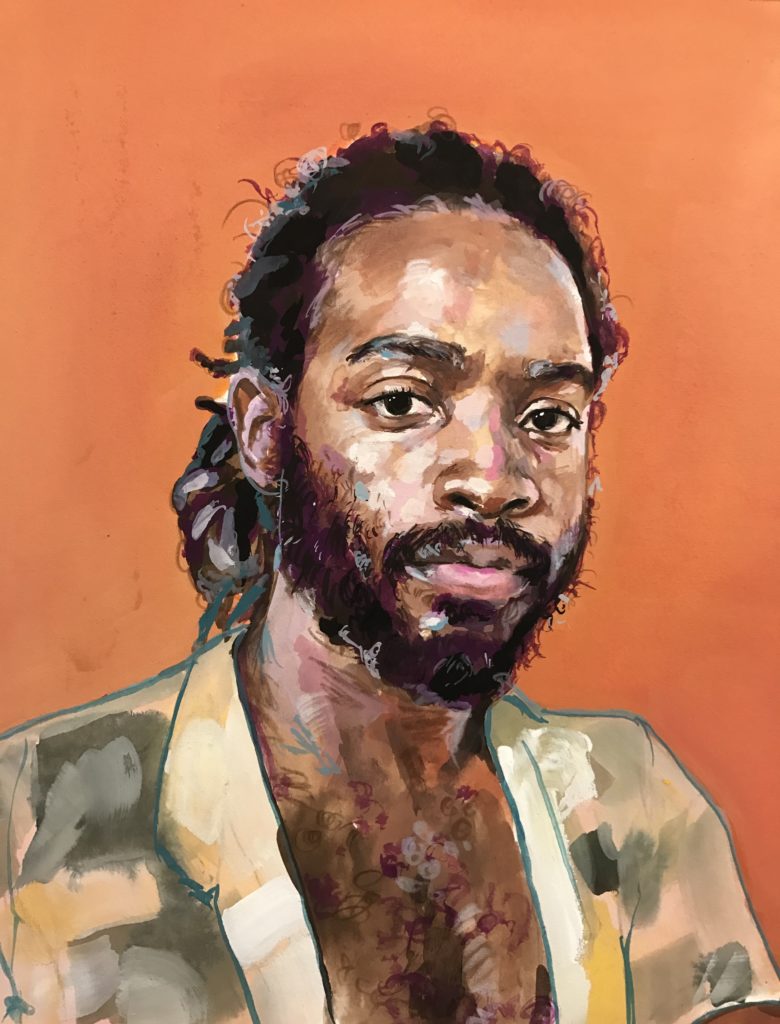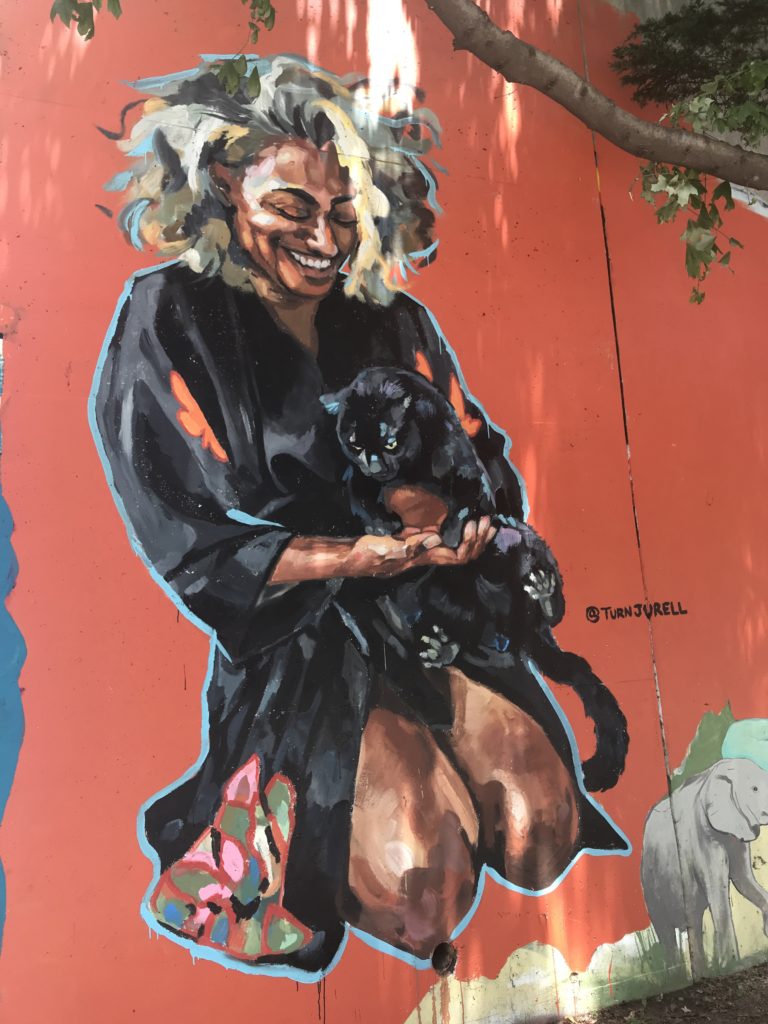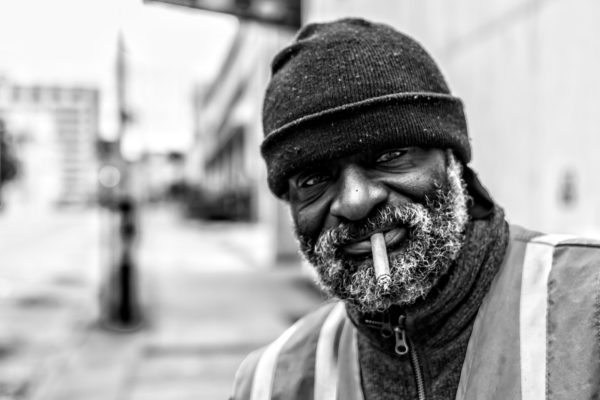Like many Atlantans, Jurell Cayetano is a transplant. The half Honduran and half African-American artist 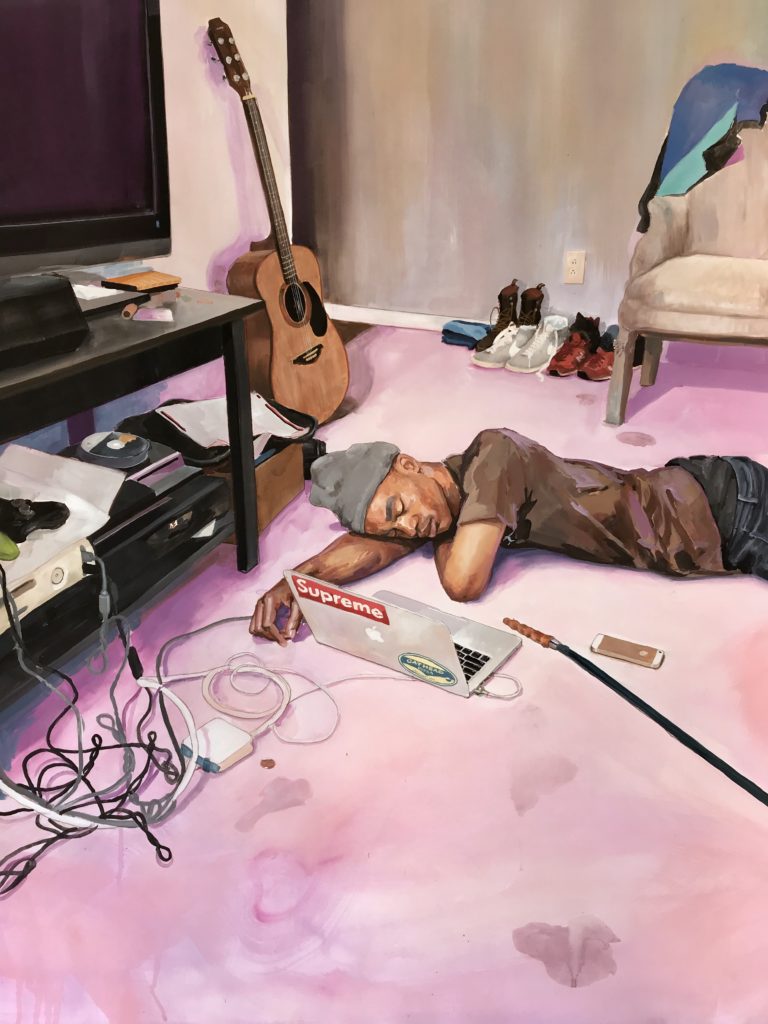 moved with his mother from Brooklyn to Atlanta when he was in elementary school. As an illustrator, Cayetano decided to use his skills in narration through art to talk about the people closest to him. His portraits feel like conversations, allowing the viewer to connect with the subject personally. With candid poses and vibrant colors, he achieves a mood and captures the everyday life of people of color in a way that’s both elegant and natural.
moved with his mother from Brooklyn to Atlanta when he was in elementary school. As an illustrator, Cayetano decided to use his skills in narration through art to talk about the people closest to him. His portraits feel like conversations, allowing the viewer to connect with the subject personally. With candid poses and vibrant colors, he achieves a mood and captures the everyday life of people of color in a way that’s both elegant and natural.
Cayetano says he’s constantly trying to push boundaries, connect to other like-minded artists in Atlanta, and make room for the type of art he wants the city to be proud of. He’s gotten nods from the likes of AfroPunk, WABE, Pabst Blue Ribbon and Visionary Artistry Magazine. We sat down with Jurell to discuss technique, connection, and how to make your own luck in ATL.
CommonCreativ: How did you get into art?
Jurell Cayetano: That’s a tricky question because there are always so many factors. One, my dad used to draw. He’d do comic book-style work. He was also part of a crew in Brooklyn during the ’80s that air-sprayed jean jackets and did graffiti. I found a sketchbook of his comic book characters and I’d try to draw like that. Both he and my uncle were good at drawing. It really inspired me.
Second, drawing Dragon Ball Z. During that time every kid was tracing them, but one dude basically said, “I drew this myself, this isn’t traced.” I didn’t want anyone to discredit my pictures so it kind of grew from there. That’s what got me into trying to draw from memory. Then I took a break. I felt like I couldn’t draw characters or comics as well as others. Then, it was really in 10th grade when I had an art class where I decided to draw real people. I was good at it and it just kept on fueling my interest in art.
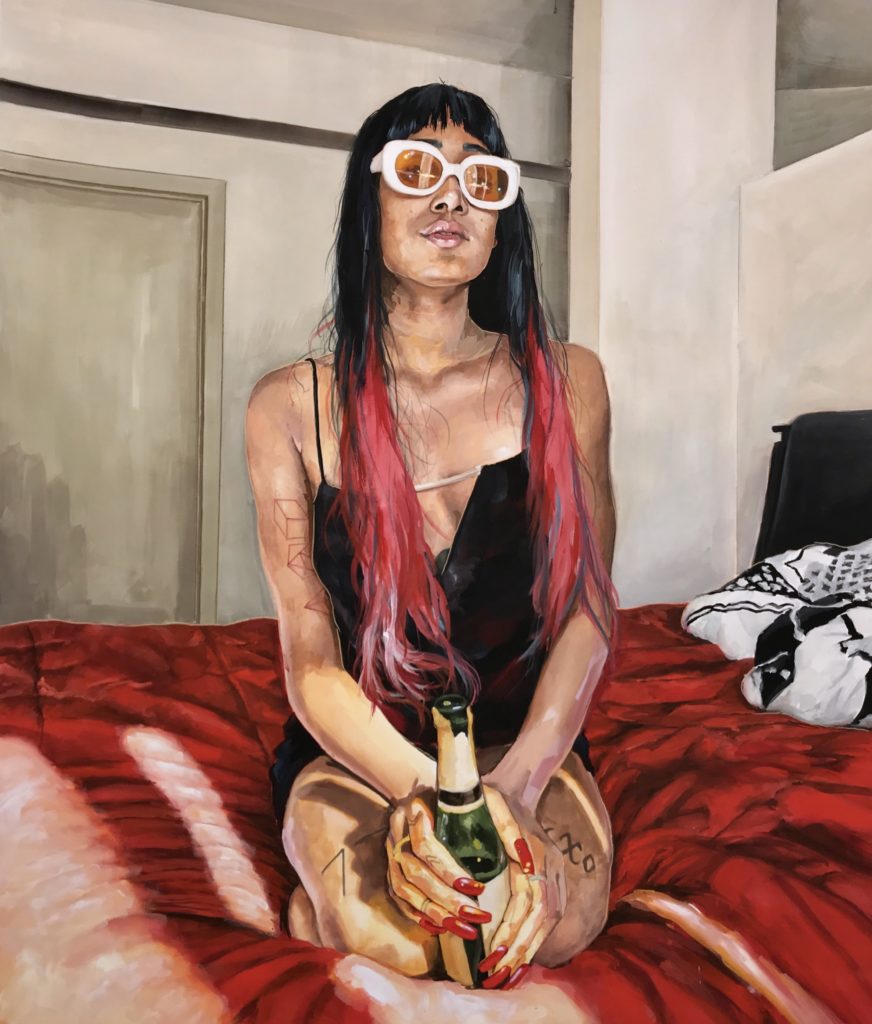 CC: How do you pick your subjects?
CC: How do you pick your subjects?
JC: I have to have a connection with that person. I either love that person already or love what they’ve shown of themselves or something about their image moves me. I can’t just do a painting because someone wants me to draw them. I get my references by taking pictures. The person’s first instinct is to pose, so I have to know them well to know how I can get them to a place where I can get a real candid.
Basically, so much of my work is trying not to be like so many portraits I see that clearly objectify the subjects. My friends are very open about their experience with the male gaze, so I’m conscious of that. Sexualizing or looking at women as objects is never a goal. I strive to show my love and respect for these women in my life. I look up to them. I use my work to tell others’ stories, I try not to inject too much of myself in their image.
CC: Where did you go to school?
JC: I went to the School of Visual Arts in New York City. I studied illustration. Going through that rigorous thing of school, going back and forth through styles, and studying painters that I like. Drawing every day. I didn’t have the normal college experience. I went to school and I shut off from everyone. I only painted. I grew into a hermit. There were days where I didn’t speak to people. I lost some of my ability to communicate. I went to school to define the raw skill I knew I had. I left knowing I can make what I want to make. I have the skills to say what I want to say through my work — I have a toolbox. After that, it was about finding what I wanted to say.
In the illustration program, you’re taught to draw pictures of other people’s stories. I was black in a mostly white school, painting pictures of white stories and it didn’t bother me. But I was so disconnected, and it showed in my work. Even my teachers saw it. They praised my work but they knew I had to find subjects I could connect to in order to say what I wanted to say.
When I finished and came back to Atlanta, my friends were having a regular college experience so I kind of took a break and decided to live that. Drink, socialize, and somewhere in that break, I found what I wanted to do with my work and the people’s stories I wanted to share.
CC: How did you find your personal style?
JC: School. Getting to work with different mediums. I work with gouache, I got to a point where I was using oils to make them look like gouache and I just wasn’t getting the depth I wanted. By switching gears, I was able to access another range of colors and let them do the work. This medium allows my hand to have a better relationship with the canvas or paper. Also, I think part of not fitting in completely anywhere allows me to look at someone from a different perspective. I feel like my style is about capturing the essence of a moment.
CC: How do you promote your work?
JC: Up until this last show at the Wish Gallery, everything that I’ve been doing [has been with friends or] do-it-yourself galleries. A couple of places have offered us space, like Murmur Gallery. We do pop-up shows, where the art is maybe there for a day or two. It’s hard. Most of the galleries out here haven’t really taken notice in me.
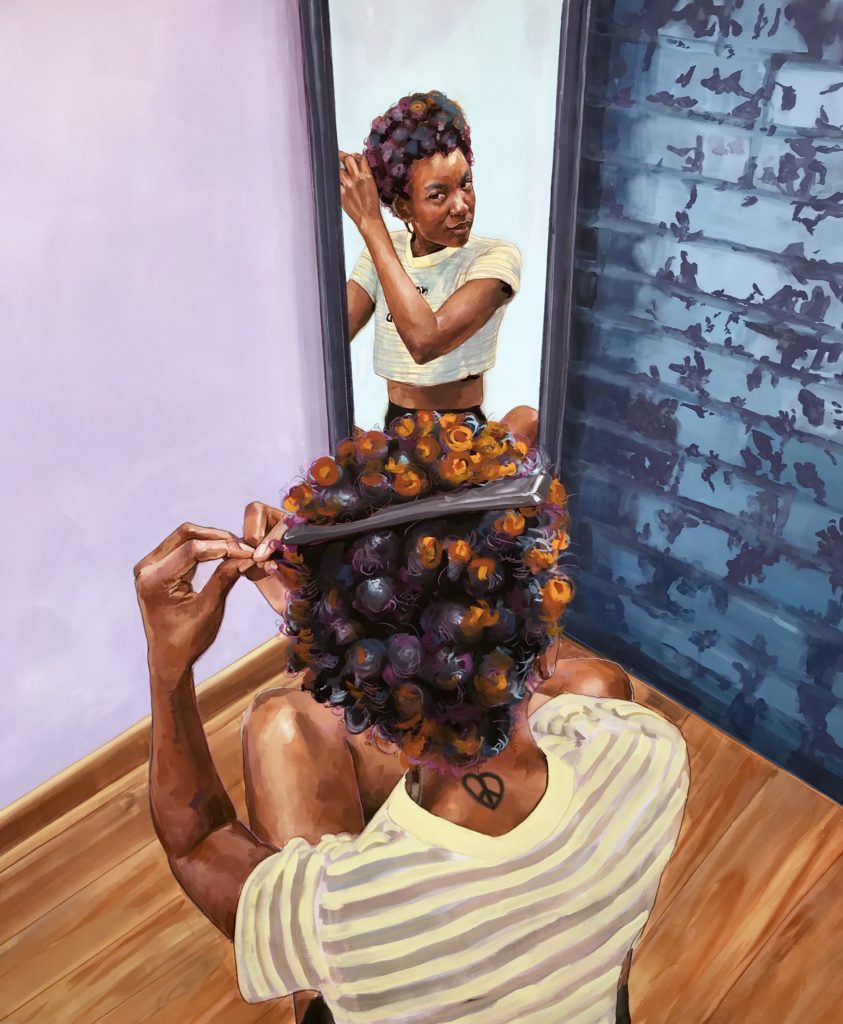 When I first came down from school, I went around to the galleries and tried to get them to represent me and get me a showing, but they said my work wouldn’t sell there. That really discouraged me. I know my work doesn’t speak to everyone, so I knew I had to find my own way of showing that I could be respected. My friend helped me do my first show. She got me a space and then through word of mouth and Instagram, we got people to come. After that, we’ve been able to do other pop-ups in different spaces.
When I first came down from school, I went around to the galleries and tried to get them to represent me and get me a showing, but they said my work wouldn’t sell there. That really discouraged me. I know my work doesn’t speak to everyone, so I knew I had to find my own way of showing that I could be respected. My friend helped me do my first show. She got me a space and then through word of mouth and Instagram, we got people to come. After that, we’ve been able to do other pop-ups in different spaces.
CC: What are some common misconceptions about artists?
JC: When I started taking art seriously, I learned how much I needed to plan. You have to go in with a game plan. My high school art teacher would say, “art is like problem-solving,” and I didn’t pay attention. It took me a while to realize he was right. You have to go in wanting to solve a problem. It sounds really rigid but it is, in a sense, all about a goal you want to accomplish. The more constrictions you have, the more limits, sometimes the better the work. Waiting for inspiration isn’t going to pay the bills and realistically help your work in the long run.
People who want to collect art but don’t have a wide knowledge of it will criticize a piece based on materials. They don’t know gouache. They say, “I want oils and canvas,” and that’s not the point. They don’t want to get something that they’re connecting to; just something they think is considered “good art.” My favorite artists were able to work in different mediums, and you develop a different view of them because you may like their watercolors better than their oils or vice versa. But it’s all about what speaks to you.
CC: What do you have in the works?
JC: There is some small stuff in the works but nothing concrete. Peter Ferrari picked me out to do a mural for Forward Warrior this month, and that was a really fun experience. I’d like to keep getting better at it so hopefully, it will open up other doors to be able to do more work. I’m open to commissions.
CC: What inspires you?
JC: A story. A moment that captures an experience. That’s where my illustration background comes into play. I want to talk to people through my work. I joke that my paintings are like Horcruxes. I like the idea of documenting a moment in someone’s life.
CC: How’s the Atlanta art scene in your eyes?
JC: I have my circle of artist friends and I’m supportive of the people around me. Not too much of it speaks to me so I have stayed to myself in my bubble. Like I was saying about the galleries: the experience, the attitude, and mentalities are holding the city back in some weird place. There is good stuff, but it’s not being cultivated, and what’s getting put out there is more of the same.
I don’t want to sound like I’m bashing others — this has been my experience. What my friends and I are doing here is trying to represent Atlanta. The work that is being shown here doesn’t always speak to the people who live here, just what the rich people “think” of Atlanta, and we need to address that. My work is not “Atlanta,” but it is made here and exists here.
CC: What keeps you in Atlanta?
JC: It took me a long time to say I’m from Atlanta. I was born in Brooklyn and even though I mostly went to school here, that Brooklyn pride is a real thing. But there is something about Atlanta that, once you get to Georgia, that’s it, you’re from here. The group that I have here, these are artists that inspire me and the community around me keep me happy to be here.
See more of Jurell’s work on his portfolio site, Twitter and Instagram.

